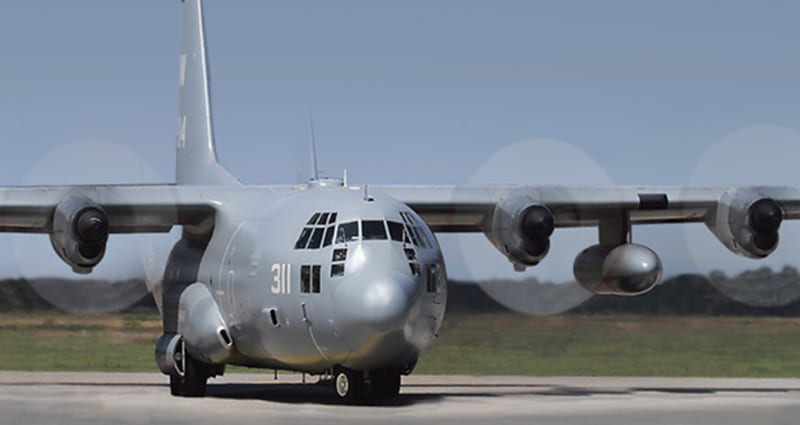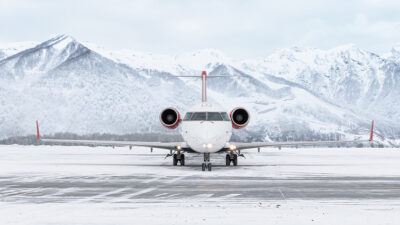The True Meaning of Proficiency

I had been on an extended break from the Navy reserves to train with a new airline. When I got back to Navy flying, I flew two long, round-trip C-130T missions to Hawaii in three months, but I had not participated in a pilot-training event in more than seven months. My first pilot trainer in a long time was a basic event where we would do engine-out landings and takeoffs.
All I thought was, “How hard could this be? I’ve been flying the C-130 for four years. It’s like riding a bike. No big deal.”
After more than 13 years of flying in the multi-engine community, little that happens on pilot trainers surprises me, but I never let down my guard. We warmed up with landing-pattern work and got ready for the engine-out takeoffs and landings. As the other pilot pulled back the No. 4 engine, I put in the control inputs and maintained centerline. We started to evaluate what happened to the engine. I directed them to shut it down (simulated) and complete the immediate-action items. However, as we continued straight ahead, the plane wouldn’t climb. Did you ever have that moment in a T-34 in primary flight training? Yep! I forgot to raise the gear and the flaps. When this situation happened 13 years ago, I vowed to always recognize why a perfectly good airplane stopped climbing on a VFR day. Not this time though. The other pilot asked me if I wanted to bring up the gear.
Proficiency
What does it mean to you? Our annual flight-time requirement as naval aviators is 100 hours as per OPNAV 3710. As I’ve come to realize, though, 100 hours can be obtained several different ways: 100 hours from 50 sorties is a lot different than 100 hours from 10 sorties. In the C-130 community, the majority of our flights are cross-country or extended over-water missions. I can get my annual minimums with just 10 takeoffs and landings. But, am I truly proficient with my emergency procedures and flying the plane in unusual configurations? If I’m flying straight and level for hours at a time, my answer is “no.”
Repetitions
We’ve all played sports. Perhaps we have even coached. One principle of sports is you must practice with copious amounts of repetitions to truly master a skill. If you want a good jump shot, you must take the shot hundreds of times to improve muscle memory. Is flying any different? Absolutely not. With budgetary cuts, part-time civilian flying, and all the other pressures of life, our reps can decrease. When reps decrease, proficiency decreases. I asked myself what I would have done if the emergency situation I discussed earlier had actually occurred when I felt “less than proficient.” Would I have handled it properly? Would I have remembered the gear and flaps because that time it was for real? Tough to say. If I had done a pilot trainer in the past month, then yes, I’m confident I would have remembered.
We all have our own ways of remaining proficient: chair flying, juggling and saying EPs, pilot trainers and simulators. Are you going over in your mind what can happen right after liftoff in the most critical phases of flight? Reaction time is minimal. If you’ve been out of flying too long, chances are you might forget what can happen right after takeoff. Other important aspects of handling emergencies can also become foggy.
There is no substitute for the real thing. Whether it’s a training flight or a simulator, it’s important that we recognize when proficiency is slipping and be assertive about ways to combat complacency. Chair flying is good, but simulating and flying is better. With budgetary cuts and skyrocketing fuel costs, it may be necessary to get in the simulator because flight trainers just aren’t an option. There’s no shame in requesting a trip to the box after an extended absence. Take advantage of the assets we have to train for the unthinkable. You never know when you may need that muscle memory to be as sharp as ever.
LCdr. Smith flies with VR-55
Reprinted with permission from Approach, the Navy & Marine Corps Aviation Safety Magazine
1. Federal Aviation Administration, Private Pilot Practical Test Standards for Airplane (FAA-S-8081-14B), (November 2011)
2. Federal Aviation Administration, Airline Transport Pilot and Aircraft Type Rating Practical Test Standards for Airplane (FAA-S-8081-5F), July 2008
3. The German Fighter Ace of WWI, Oswald Böelcke, makes several indirect references to Situational Awareness in his writings. (“An Aviator’s Field Book: Being the field reports of Oswald Bölcke, from August 1, 1914 to October 28, 1916”) and his list of air combat principles, often referred to as the “Dicta Boelcke.”
4. Dr. Mica Endsley (1995b)

The Naval Safety Center (COMNAVSAFECEN) prevents mishaps to save lives and preserve resources. The advice, policies, services and risk management information and tools. COMNAVSAFECEN provides enhance command culture, combat readiness and global war-fighting capabilities. It's vision is to empower all Sailors, Marines, civilians and their families to collectively embrace a proactive command culture of risk identification and management to achieve zero preventable mishaps.
© 2025 The Naval Safety Center. All Rights Reserved.
Next ArticleRelated Posts

Mitigating Risk – Amidst the Chaos
There have been more high-profile aviation accidents in the last few months than in the last few decades. As we mourn those we have lost and aim not to make assumptions before final reports are completed, we must focus, personally and professionally, on assessing the risk of something similar happening within our aviation enterprises.

Let’s Get Personal (About Risk)
Aviation loves to talk about risk management. Insurance companies, manufacturers, and organizations all fully embrace the concept and know that to make it work on the line, we must get people at all levels and from all functional areas to embrace it. Tools such as the Flight Risk Assessment Tool (FRAT) are noble attempts, but at the core of it all lies the simple fact that people, as individuals, view risk differently.

